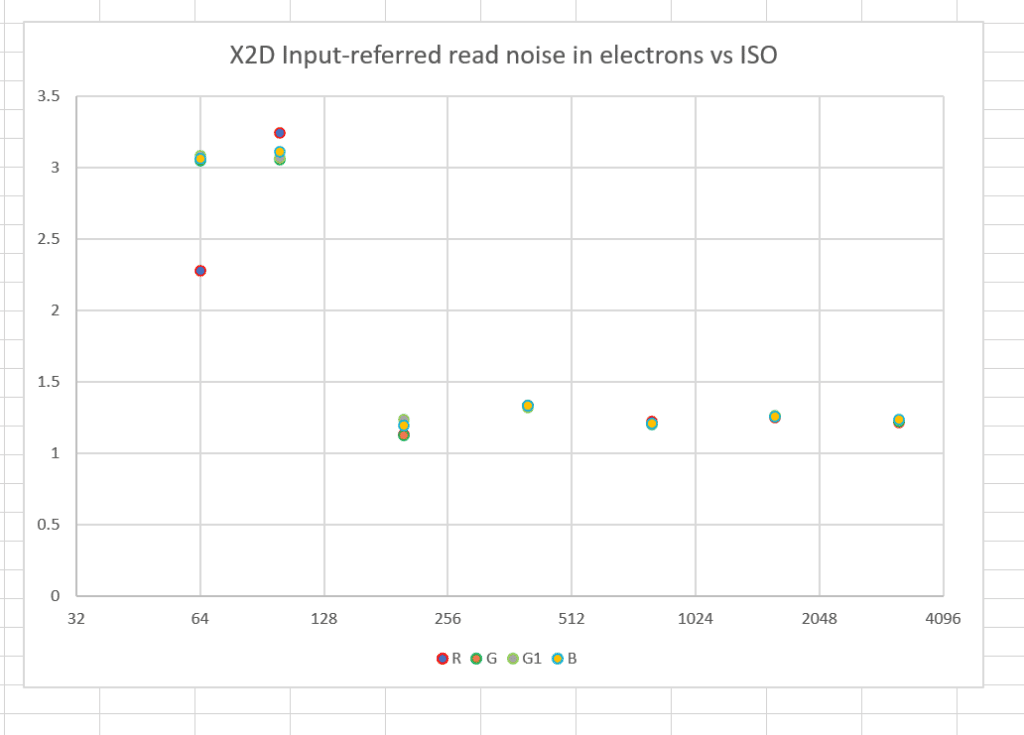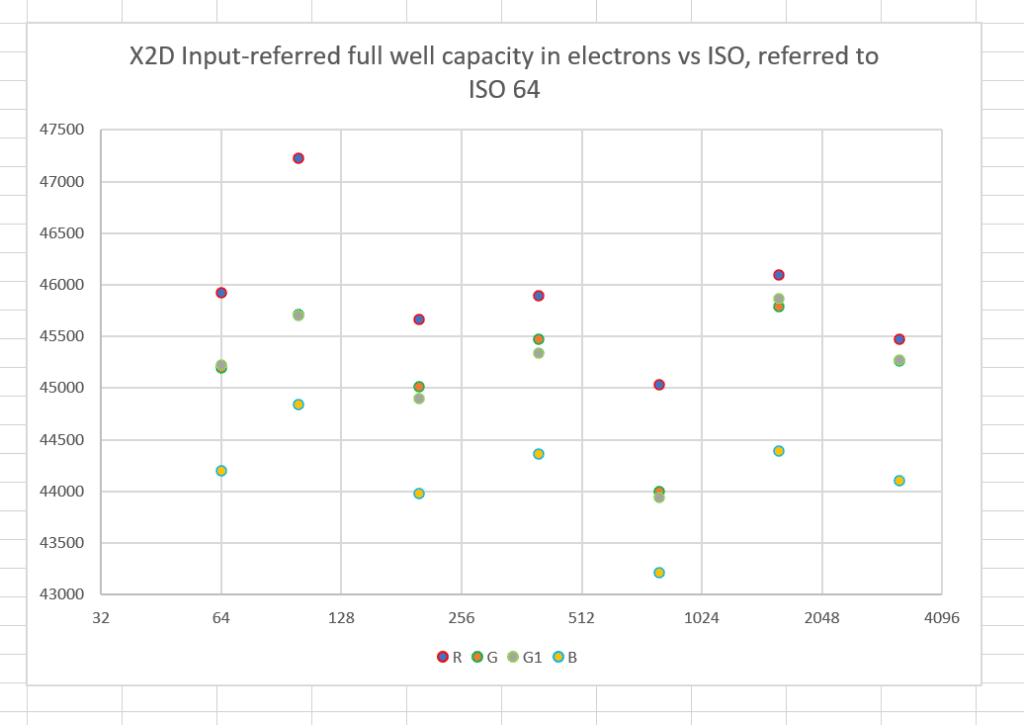This is the 20th in a series of posts on the Hasselblad X2D 100C camera and the XCD lenses. You will be able to find all the posts in this series by looking at the righthand column on this page and finding the Category “X2D”. It’s also about the GFX 100S, so I’ve tagged it for that camera, as well.
Alphabet soup in that post title, huh? I’ll break it down for you.
- FWC is full well capacity, a measure of the number of electrons the sensor can store on each pixel. Higher means a higher signal to noise ratio (SNR) for shots that are exposed to the right.
- RN is read noise. That’s the noise you see on the sensor when there is no light applied. In this most, I’m measuring it in terms of the the charge on the photodiodes on the sensor, and it is also measured in electrons.
- PTC’s are photon transfer curves. They plot the SNR on the vertical axis versus the mean raw values on the horizontal axis.
Here’s the PTC for the X2D with 14-bit precision from the sensor:
The crosses are the measured values. The lines are the values that result when the measured values are fitted to a standard sensor model. There is a good match between the measured and modeled values, indication that Hasselblad isn’t playing nonlinear or spatial computational games with the raw files. The curves are, on the right from top to bottom, for ISO 64, 100,200, 400, 800, 1600, and 3200. Except for that little droop in the ISO 64 curve 12 stops down from full scale, they are exactly what you’d expect from a dual conversion gain camera that changes from low conversion gain to high conversion gain at ISO 200.
Here is the modeled read noise versus ISO setting for the four raw channels:
The is very respectable. The camera is essentially ISO-less above ISO 200.
Here is the modeled FWC versus ISO setting for the four raw channels.
In a perfect world, these would all be the same. They are close to that. The FWC appears to be about 45,000 electrons.
No surprises here. This is the same sensor that we’ve known and loved in the GFX 100 and GFX 100S. It’s just programmed differently in the X2D.



Leave a Reply